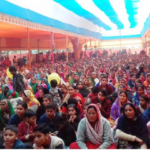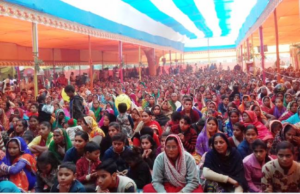Boost Your Social Media Presence with the Free OG Plugin for WordPress
In today’s digital age, we all want our websites to shine on social media. Whether it’s a blog post, a product page, or a portfolio, making sure our content looks good when shared on platforms like Facebook and Twitter is crucial. That’s where the OG plugin comes into play, and guess what? We’ve found a free OG plugin for WordPress that’s a game-changer for anyone looking to enhance their social media presence.
This plugin is not just any tool; it’s designed to automatically add Open Graph metadata to your WordPress site, ensuring that your content is not only visible but also attractive when shared on social media. The beauty of Open Graph metadata is that it allows you to control how your content appears on social media, from the image that’s displayed to the title and description. This means no more random images or incomplete descriptions when your links are shared, giving your content the presentation it deserves.
🔧 Features of the OG Plugin:
- Automatic metadata addition: Say goodbye to manually adding tags.
- Facebook Open Graph and Twitter card integration: Tailor your content for the biggest social media platforms.
- Image optimization for social media: Ensure your images look great on any platform.
- Title and description optimization: Grab attention with compelling titles and clear descriptions.
🚀 Why Use the OG Plugin?
- Boost social media interaction: More appealing posts mean more clicks and shares.
- Increase social media reach: Better presentation leads to wider visibility.
- Improve post appearance: Make every share count with professional-looking posts.
- Enhance social media engagement: Engaging posts encourage more interaction from viewers.
Discover the Free OG Plugin for WordPress, designed to boost your website’s social media presence by seamlessly integrating Open Graph support. This plugin is not only safe and legal but also ensures that your content is perfectly tailored for social media, enhancing both engagement and visibility. Whether you’re looking to improve your social media content display or increase your reach, this plugin is an essential tool for any WordPress site owner.
Why You Need the OG Plugin for Your WordPress Site
In the vast ocean of websites and blogs, standing out on social media can feel like an uphill battle. But, we’ve got a secret weapon that can turn the tide in our favor: the OG plugin. This little gem is more than just a tool; it’s our ally in the quest to boost social media interaction and increase social media reach.
Why do we need it, you ask? Well, imagine sharing a link to your latest blog post on Facebook or Twitter, only to find that the preview is a random image from the site, or worse, no image at all. It doesn’t exactly scream ‘click me,’ does it? That’s where the OG plugin swoops in to save the day. By automatically adding Open Graph metadata to our WordPress site, it ensures that every share is a mini-advertisement for our content, complete with a captivating image, a catchy title, and a compelling description.
But it’s not just about making things look pretty. The OG plugin helps us to:
- Improve post appearance: First impressions matter, and a well-presented post is more likely to get clicked on.
- Enhance social media engagement: People are more likely to interact with posts that are visually appealing and informative.
- Streamline social media optimization: No more manual tweaking of metadata for each post. The plugin does the heavy lifting for us.
In short, the OG plugin is our behind-the-scenes hero, working tirelessly to make sure our content gets the attention it deserves on social media. It’s not just an add-on; it’s an essential part of our digital marketing toolkit.
What is Open Graph and How Does It Work?
Ever wondered how some posts on social media look so well put together, with perfect images and descriptions, while others seem to just scrape by? The secret lies in something called Open Graph protocol. Think of it as the language that social media platforms and websites use to talk to each other about what’s being shared.
When we use the OG plugin on our WordPress site, it adds Open Graph tags to our content. These tags tell social media platforms like Facebook and Twitter exactly what image to display, what the title of the content is, and what description to use. It’s like giving social media a cheat sheet about our content.
Here’s how it works:
- We publish a post on our WordPress site.
- The OG plugin automatically adds Open Graph metadata to the post.
- Someone shares the post on social media.
- The social media platform reads the Open Graph tags and displays the post exactly how we want it to be seen.
It’s a simple process with powerful results. By ensuring our content is presented in the best possible light, we’re not just improving its appearance; we’re making it more shareable, more clickable, and more engaging.
The Impact of OG Tags on Social Media Engagement
Let’s talk numbers, because at the end of the day, the proof is in the pudding. Posts with optimized Open Graph tags have a higher chance of catching the eye of potential readers scrolling through their social media feeds. This isn’t just speculation; it’s a fact backed by the behavior of social media users.
When our posts are equipped with eye-catching images, informative titles, and descriptive summaries, courtesy of the OG plugin, we’re essentially rolling out the red carpet for increased social media engagement. Here’s what happens:
- Visibility Boost: Our posts stand out in a crowded feed, making it more likely that people will stop and take notice.
- Increased Click-through Rates: A well-presented post is more enticing, encouraging more clicks.
- Higher Shareability: People are more inclined to share content that looks good and provides value, further amplifying our reach.
In essence, the OG tags are our silent ambassadors on social media, presenting our content in the best possible light and inviting engagement. By leveraging the power of the OG plugin, we’re not just sharing content; we’re creating opportunities for interaction, conversation, and community building. It’s a game-changer for anyone looking to elevate their social media presence and connect with a wider audience.
How to Install and Set Up the Free OG Plugin
Installing the OG plugin on our WordPress site is like giving it a superpower for social media optimization. It’s easy, quick, and we’re here to guide you through every step. Let’s dive into how we can get this plugin up and running to enhance our social media presence.
Step-by-Step Guide to Installing the OG Plugin
- Log in to your WordPress dashboard.
- Navigate to Plugins > Add New.
- In the search bar, type “OG plugin” and hit Enter.
- Look for the plugin that mentions automatic Open Graph metadata addition. It should be free and have good reviews.
- Click ‘Install Now’ and wait for the installation to complete.
- After installation, click ‘Activate’ to start using the plugin on your site.
🔧 Pro Tip: Always check the plugin’s last update date and compatibility with your version of WordPress. This ensures everything runs smoothly and safely.
Configuring OG Tags for Optimal Performance
Once the OG plugin is installed, setting it up correctly is crucial for making the most out of its features. Here’s how we can configure our OG tags for optimal performance:
- Access the OG Plugin Settings: Find the plugin settings in your WordPress dashboard. This is usually under Settings or directly on the plugin’s page.
- Set Default Image: Choose a default image that will appear when your posts don’t have a specific featured image. This ensures social media content improvement even when we forget to set an image.
- Customize Titles and Descriptions: Although the plugin automatically pulls titles and descriptions from your posts, customizing them can boost social media interaction. Make them catchy and relevant.
- Enable Twitter Card Integration: If the plugin offers this feature, enabling it will ensure your content looks great on Twitter as well as Facebook.
- Test Your Setup: Share a post on Facebook or Twitter to see how it appears. Adjust settings if needed.
📊 Remember: Regularly updating the plugin and checking your social media posts ensures that your content always looks its best.
Enhancing Your Website’s Social Shares with OG Plugin
When we talk about making our website’s content more shareable and visually appealing on social media, the OG plugin plays a pivotal role. This tool is our go-to for ensuring that every piece of content we share looks its best, grabs attention, and encourages more shares. But how exactly does the OG plugin enhance our website’s social shares? Let’s dive in.
Firstly, the OG plugin automatically adds Open Graph metadata to our content, which is a game-changer. This metadata includes crucial information like the title, description, and image that social media platforms use when our content is shared. It means that instead of random images or text appearing, our chosen details make the share look professional and enticing.
Moreover, the plugin’s Facebook Open Graph and Twitter card integration ensures that our content is optimized for the biggest social media platforms. Whether our audience is scrolling through Facebook or Twitter, our posts will catch their eye.
Here’s a quick list of how the OG plugin transforms our social shares:
- Automatic metadata addition: Saves us time and ensures consistency.
- Optimized images and text: Makes our shares visually appealing and informative.
- Increased engagement: More appealing shares lead to more likes, comments, and shares.
- Enhanced visibility: Optimized posts are more likely to be seen and clicked on.
By leveraging the OG plugin, we’re not just sharing content; we’re strategically boosting our online presence and making every share count.
Customizing OG Tags for Different Types of Content
Customizing OG tags for different types of content is like tailoring a suit; it just fits better. Whether it’s a blog post, a product page, or an event announcement, each type of content has its unique appeal that can be enhanced with the right OG tags. Here’s how we do it:
- Blog Posts: We focus on compelling titles and eye-catching images that summarize the post’s theme. This draws readers in and piques their curiosity.
- Product Pages: High-quality images of the product, along with a concise description highlighting its key features, make it irresistible.
- Event Announcements: A vibrant image of the event, the date, and a catchy title encourage shares and attendance.
By customizing the OG tags for each type of content, we ensure that our shares are not only visually appealing but also accurately represent the content, making them more shareable and engaging.
Best Practices for Using OG Tags to Increase Visibility
To truly harness the power of OG tags and boost our website’s visibility on social media, we follow a set of best practices:
- Consistently Use High-Quality Images: A striking image can make all the difference in whether someone decides to click on our post or not.
- Optimize Titles and Descriptions: We make sure they are clear, engaging, and include relevant keywords.
- Regularly Update OG Tags: As our content evolves, so should our OG tags to reflect the most current and engaging elements.
- Monitor Social Shares: We keep an eye on how our content performs on social media to see what works best and adjust our strategy accordingly.
FAQ: Understanding the OG Plugin Better
What is the alternative to Ogplugin?
When we’re looking for alternatives to the OG plugin, we’re essentially looking for tools that can help us manage Open Graph metadata for our WordPress site. While the OG plugin does a fantastic job at enhancing our social media presence, there are other plugins out there that offer similar functionalities. Some popular alternatives include:
- Yoast SEO: Besides its comprehensive SEO features, Yoast SEO allows us to manage social metadata for platforms like Facebook and Twitter, making it a strong contender.
- All in One SEO Pack: This plugin also includes social meta data management, ensuring our content looks good when shared on social media.
- SEOPress: A newer entry in the SEO plugin market, SEOPress offers social media optimization features alongside its SEO tools.
Each of these plugins has its unique strengths, and the best choice depends on our specific needs, such as additional SEO capabilities or simplicity in managing social media metadata.
What is a plugin in programming?
In programming, a plugin is like a power-up for our website or software. It’s a piece of code that we can add to our existing software to give it new abilities or features without having to change the original software. Think of it like adding a new accessory to a toy to make it do more cool stuff. For WordPress, plugins can do things like help us improve our website’s SEO, add contact forms, or even make our site load faster. They’re super helpful because they let us customize our site to meet our needs without needing to be a coding genius.
How to add og:image in WordPress without a plugin?
Adding an og:image to our WordPress site without using a plugin might sound tricky, but it’s totally doable with a bit of code. Here’s a simple way to do it:
- Go to your theme’s
functions.phpfile. - Add the following code snippet:
function add_custom_og_image() {
if (is_single()) { // This checks if we're on a single post.
?>
<meta property="og:image" content="URL_to_your_image.jpg" />
<?php
}
}
add_action('wp_head', 'add_custom_og_image');
Replace "URL_to_your_image.jpg" with the URL of the image you want to use as your og:image. This code tells WordPress to add the og:image tag to the head section of your single post pages, ensuring that this image is used when your posts are shared on social media.
Is the OG plugin safe and reliable?
When we talk about the OG plugin, we’re keen on ensuring it’s both safe and reliable for our WordPress site. From our experience and the feedback from the WordPress community, the OG plugin is indeed safe to use. It’s developed following WordPress coding standards and regularly updated to keep up with WordPress core updates and security patches.
Moreover, being a widely used plugin, any security vulnerabilities are quickly addressed by the developer community. However, as with any plugin, it’s crucial to keep it updated and to regularly check the plugin’s page for any reported issues. This proactive approach helps us maintain our site’s security and ensures the plugin continues to work effectively in enhancing our social media engagement and visibility.






More Stories
JetX Game Guide ➤ Win Big with Strategy & Chance
CorelDRAW 21 Free Download ➤ Get Professional Graphic Design Software Now
Adobe Photoshop 7.0 Crack Version ➤ Free Download Guide for Advanced Editing